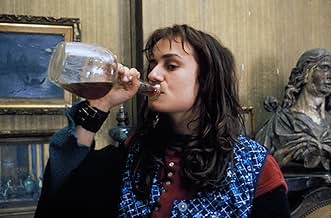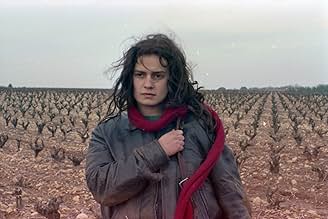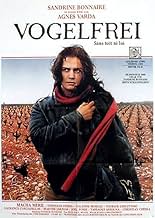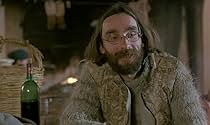Il ritratto duro e impietoso della vagabonda Mona. Ritrovata congelata all’inizio del film, la sua storia viene ricostruita attraverso una serie di flashback raccontati dalle persone che ha ... Leggi tuttoIl ritratto duro e impietoso della vagabonda Mona. Ritrovata congelata all’inizio del film, la sua storia viene ricostruita attraverso una serie di flashback raccontati dalle persone che ha incontrato prima di morire.Il ritratto duro e impietoso della vagabonda Mona. Ritrovata congelata all’inizio del film, la sua storia viene ricostruita attraverso una serie di flashback raccontati dalle persone che ha incontrato prima di morire.
- Regia
- Sceneggiatura
- Star
- Premi
- 8 vittorie e 5 candidature totali
Recensioni in evidenza
It works as an alternation of flashes-back and interviews with people about their recollections involving a female rambler named Mona. We won't know much about herself. After she passed her high school diploma, she started to work for different bosses as a secretary but grew tired of his job. So, she packed in to leave for adventure through odd jobs. However, Varda's heroine keeps all her mystery and ambiguity. Are we really sure about what she says? Doesn't she lie? The female filmmaker doesn't comfort the audience because as the elements of the puzzle are pieced together, she throws the people who met Mona out in the same basket, either it is this university professor, this Maroccan guest worker or this former philosophy student who believed in the events of May 1968 in France: they are all responsible for Mona's death because of their egoism, their lack of communication with her. Varda delivers a similar message to her 1961 film: loneliness is a burden and it's better to open oneself to others to make things improve.
"Sans Toi Ni Loi" has the form of a documentary with a gritty tonality in which the female filmmaker keeps a certain distance with her heroine and everything she goes through. Thanks to this, tawdry or violent sequences take another dimension like the moment when the garage owner leaves Mona's tent pulling up his trousers or the man who rapes her in the woods. We won't see the horrid act.
Varda hired non-professional actors and that's why her film has a larger than life feel. An impression accentuated by Sandrine Bonnaire's sensational performance. She "lives" more than she acts her role. The role of this rambler fits her like a glove.
This is one that can stand multiple viewings.
Varda doesn't require her to do anything but exist and it's a very 'un-actressy' performance, closer to real life than to what we are used to seeing in the movies. Now and again the film dips into the conventional as if Varda is trying to put some meat on its bones but for the most part, this is a remarkable work and one of the best of its director's career.
What's more amazing still is how Varda can make such a depressing story so mesmerizing. It is a touching, enchanting story of a lost girl slowly sinking deeper and deeper into society's refuse pile. And even though from the first reel we know her fate, we have to see how it unfolds. I don't remember the last time I saw such a beautiful film. One for the film schools. A masterpiece of French neo-realism.
Such is Agnes Varda's talent that the movie affected me so deeply -- my favourite movie of hers, by the way. The landscapes are so vivid, the dead tree branches so bare yet so brittle in the harsh elements. The compositions possess a fixed, absolute nature that conveys a hopeless destiny. There is no offensive beauty in Mona's destitution, there is merely purity.
Because so few motion pictures resonate with this much intensity and feeling for me, I go through periods in which I feel like I'm wasting my life away seeing so many, but when I consider the alternative, Mona's choices suddenly feel real to me.
Extraordinary in every sense.
Make a gallant effort to see VAGABOND. It will touch you deeply and wake you from the slumber of indifference.
Indeed "No one makes it alone" could better be the tag line here, and Bonnaire's Mona goes on an odyssey that is nothing short of harrowing. Also trading heroin chic for (self-imposed?) homeless bleak pushed us into less charted filmic waters. Choosing an unknown for the title role was also a good call I suspect. The film is now older than it's lead actress was at the time.
So much of the film talks about how Mona stinks, perhaps smell-a-vision would have helped ;> Honestly her face is still too attractive, although wide and maybe manly in a way, that for me the sense of her scent didn't wash. That being said, her disaffection was on display so well, that you could see her as having a dirty soul. At nearly every chance of being likable she veers to the other direction, the one notable exception for me being her interaction with the "platonologne" (is that like octogenarian, don't know the French...the characters all had interesting descriptions in the credits)..
Additionally, from the English subtitles and snatches of French, I sense the dialog (should I say dialogue) in this was quite cutting and clever in parts.
While Mona lives without roof or law, while she may move without purpose or direction, she is more than a human tumbleweed. She does not live without leaving a trace...but the filmmaker keeps us intentionally distant from her, we are never allowed inside her mental tent. Thus our composite sketch of her is as complex and contradictory as the people she encounters. Not only does Mona live without control over her life, her death as well eludes her.
Viewers may find it less easy to escape.
Thurston Hunger 7/10
Lo sapevi?
- QuizThe episodes in which the main character is involved are each marked off by a tracking shot, 13 of them.
- BlooperIn the opening segment, Mona (Sandrine Bonnaire) is lying in a ditch in the vineyard. The character Mona is supposed to be dead, but if you look at the actress's neck you can clearly see a neck artery visibly pulsing.
- Citazioni
les Bergers: She blew in like the wind. No plans, no goals... No wishes, no wants... We suggested things to her. She didn't want to do a thing. Wandering? That's withering. By proving she's useless, she helps a system she rejects. It's not wandering, it's withering.
- ConnessioniFeatured in Siskel & Ebert & the Movies: The Best Films of 1986 (1987)
- Colonne sonoreVariations sur la Vita
Composed and directed by Joanna Bruzdowicz
I più visti
- How long is Vagabond?Powered by Alexa
Dettagli
- Data di uscita
- Paesi di origine
- Sito ufficiale
- Lingue
- Celebre anche come
- Vagabond
- Luoghi delle riprese
- Nîmes, Gard, Francia(train station)
- Aziende produttrici
- Vedi altri crediti dell’azienda su IMDbPro

![Guarda Bande-annonce [OV]](https://m.media-amazon.com/images/M/MV5BYWE4N2ViZjQtYzgyNy00MDIxLTk0ZWUtNjE5MmJlMWU3OTQ0XkEyXkFqcGdeQXRyYW5zY29kZS13b3JrZmxvdw@@._V1_QL75_UX500_CR0)























